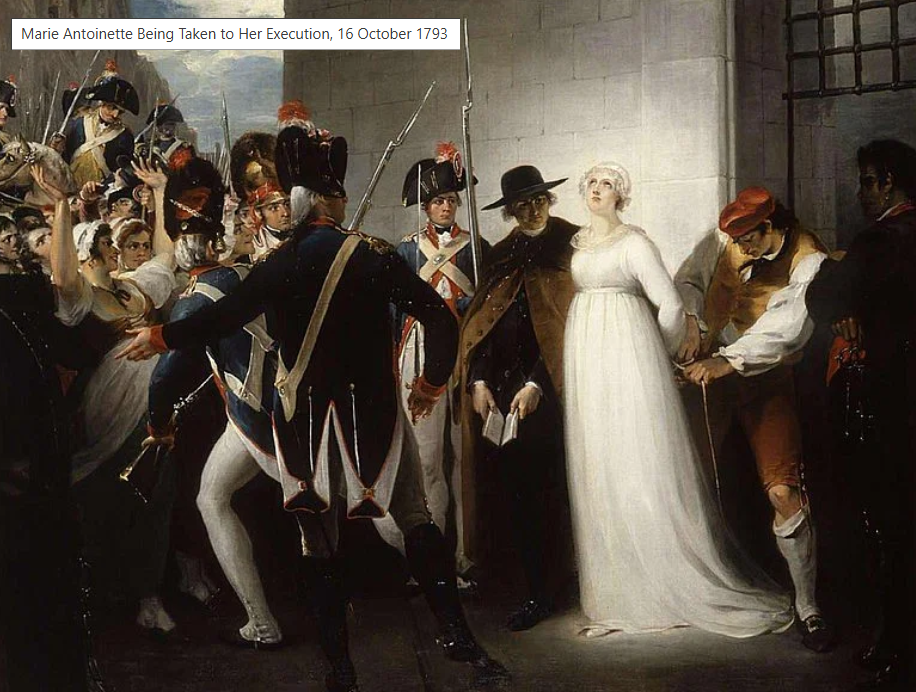HECOL 268 - Marie Antoinette
1/21
There's no tags or description
Looks like no tags are added yet.
Name | Mastery | Learn | Test | Matching | Spaced |
|---|
No study sessions yet.
22 Terms
Which phases in 18th century are a focus on Marie Antoinette and why?
the last 3 phases (3,4, and 5) because she is Queen of France? more like queen of fashion
how was Marie Antoinette treated in phase 3 (1730s to 1760s)?
Children dressed as adults, sexualizing portraits of young women
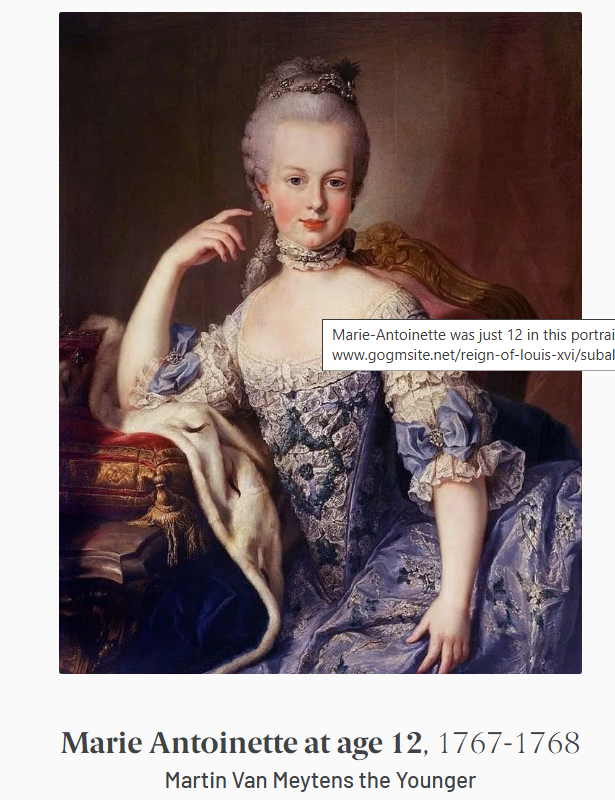
Where was Marie Antoinette born, and what role did she play in European diplomacy?
Marie Antoinette was born in Vienna as an Archduchess of Austria. She was the 11th daughter of Maria Theresa, the ruler of the Habsburg dominions, and Franz Stephan of Lorraine. Marie Antoinette served as a diplomatic pawn in European alliances, particularly between France and Austria, following the Seven Years' War.
How did 19th-century philosophers influence children's clothing, specifically the child's frock?
19th-century philosophers emphasized treating children differently from adults, promoting practices like breastfeeding and bonding. This led to simpler, more comfortable clothing, such as the child's frock, often with a sash. In the 19th century, colors became gendered, with blue for girls and pink for boys.
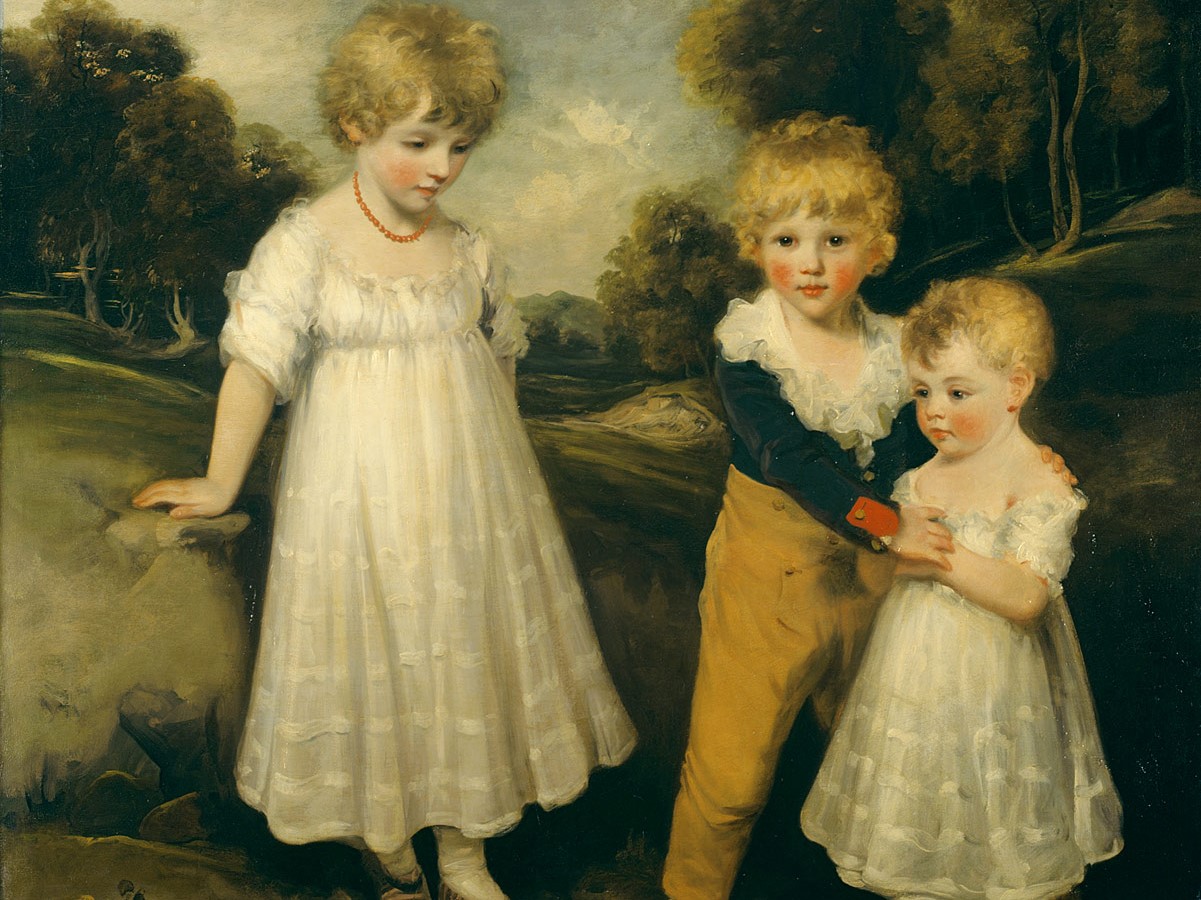
what garments were important with womens wear in phase 3?
The wide skirts are supported by a frame that continues to be called a panier
Mantuas (gowns) with full “watteau back” pleats at the shoulder back and fitted fronts were known as robe a la francaise
fitted back is the robe a l'anglaise
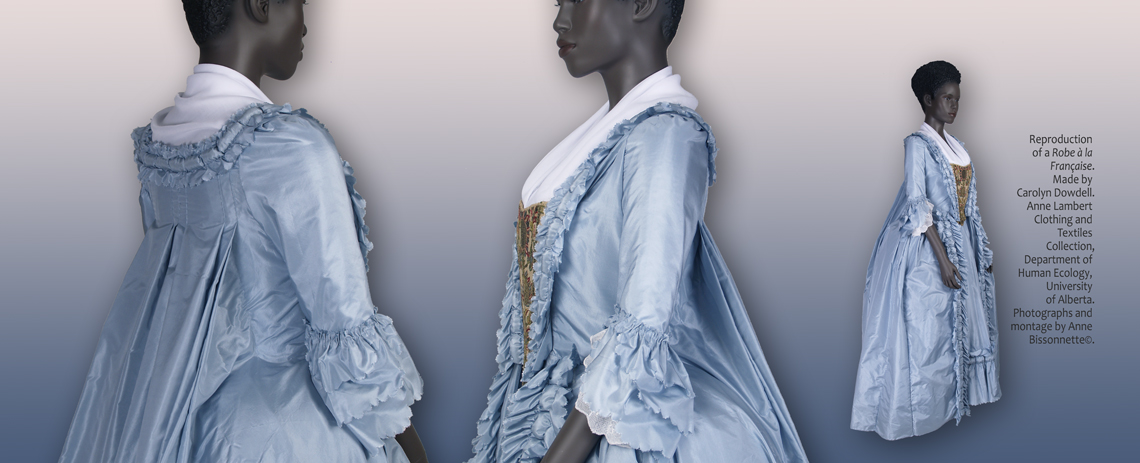
What challenges did Marie Antoinette face in her marriage to Louis-Auguste in phase 4 (1770 mid to 1780s)?
Marie Antoinette faced criticism for her Austrian background and her failure to fulfill royal duties. Her marriage was strained due to Louis-Auguste's timidity and lack of intimacy, leading to public scrutiny.
What was Marie Antoinette's situation in 1774 when she became Queen of France?
In 1774, at age 19, Marie Antoinette became Queen of France. By then, she had withdrawn from court life, seeking companionship and distraction among a circle of favorites, partly due to her unsatisfactory private life with Louis XVI.
Marie Antoinette had little interest in politics, using it only to secure favors for her friends (madame de lamballe), with influence similar to that of Louis XV's mistresses.
what were the hairstyles like for women in phase 4?
Extreme hairstyles late 1760s-mid 1780s -> Le “pouf”
“Calash” → cap for the head (bonnet), collapsible and for protecting the pouf, changes in ways women socialize
feathers for the hairstyle
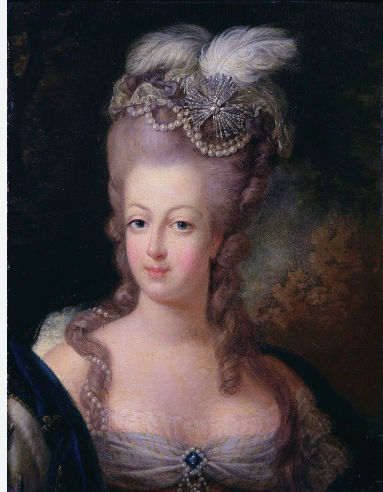
what important garments were seen in phase 4?
the use of silk fabrics and elaborate decorations.
Court dresses featured hip pads and false rumps, replacing panniers.
New styles emerged, such as the robe à la polonaise, which had no waist seam and a loose fit, with an inverted "V" at the front bodice.
Later, skirts were looped up to expose the petticoat.
Neoclassical influences emphasized body lineation.
the "half dress" style, characterized by a lady in a straw hat (typically worn by peasants) and white clothing, became associated with a more casual, undress look.
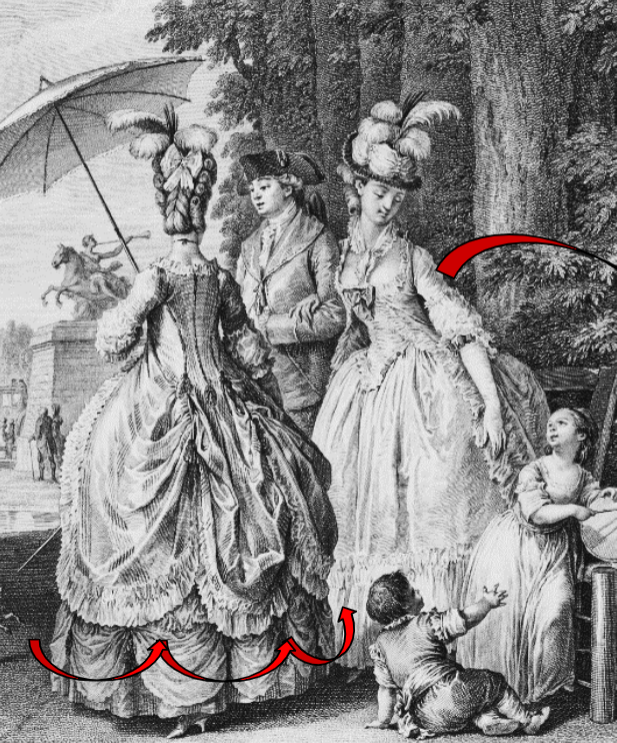
How does french fashion seam extremely vibrant because of conspicuous consumption?
difference in garment fabric and construction quality along socio economic classes are quite visible
lower class were plain while higher class had more vibrancy and rococo theme
even servants dressed somewhat nice to reflect their masters wealth
what type of garment is marie antoinette seen when she rides a horse?
the redingote, a type of coat dress inspired by menswear
scandalous
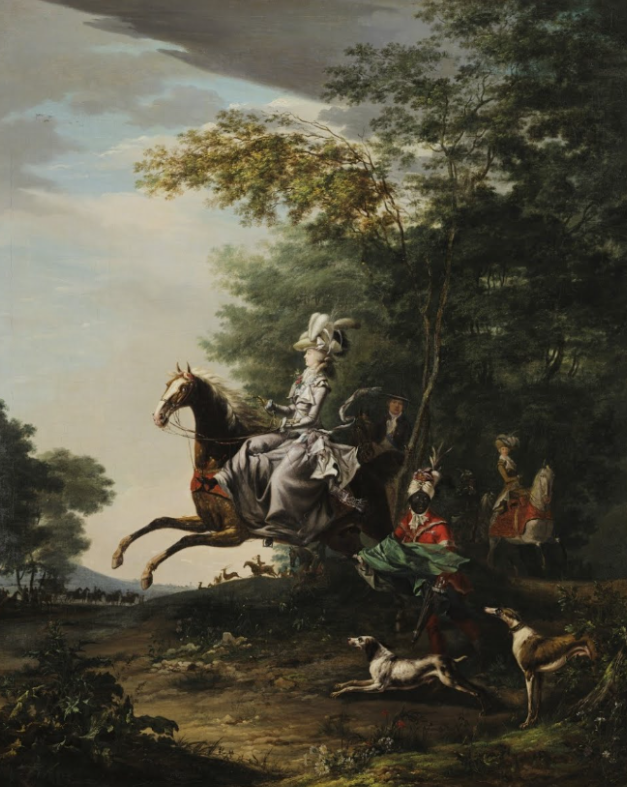
what inspired some of Marie Antoinettes dress and what impact did it have on france?
anglomania
the queen is wearing cotton but france is known for wearing silk and marie is linking herself to england and english style attire basically supporting the english against the french battle, this sparks rage from france to marie
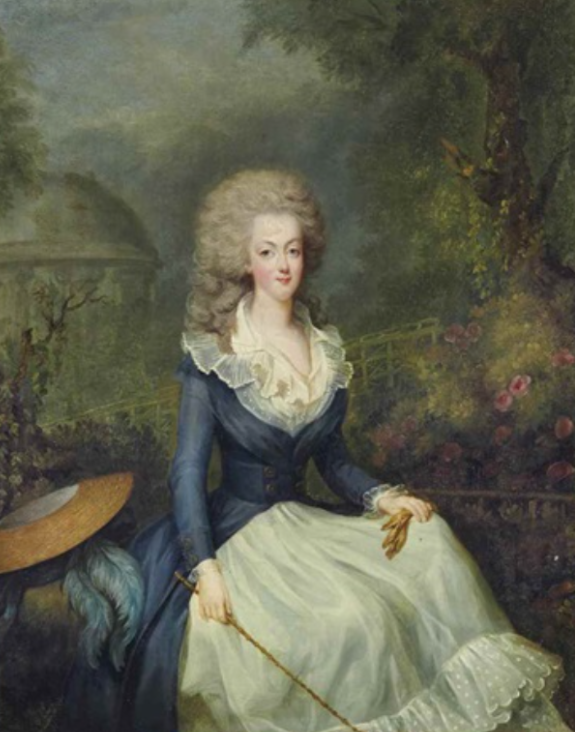
anglomania in fashion for menswear and womenswear
phases in menswear and womenswear differ
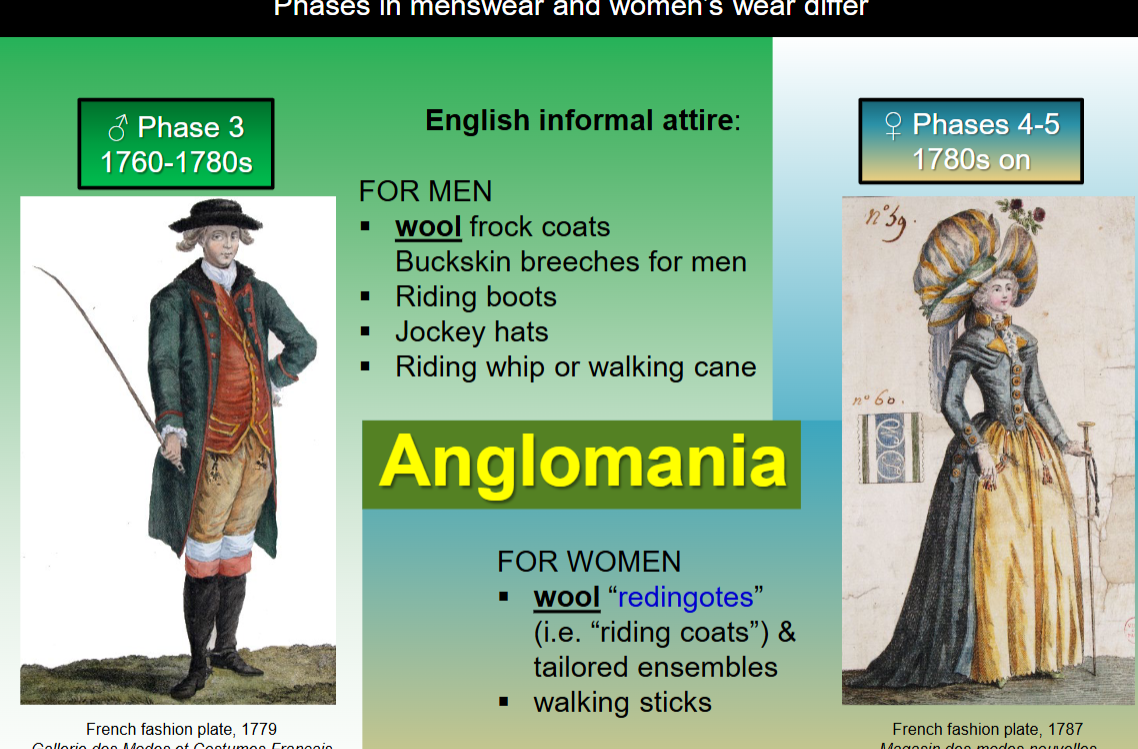
Why did Marie Antoinette's "chemise à la reine" style cause a scandal?
Marie Antoinette's "chemise à la reine," made of expensive cotton muslin, caused a scandal because it was seen as too informal and immodest. The white dress, often paired with a straw hat and turned-up sleeves, was perceived as a form of undress by the public. When the painting of her wearing this style was exhibited, critics mocked it as depicting the Queen in her chemise, leading to outrage over her perceived lack of proper attire.
Chemise a l’enfant -> child frock echos that she is wearing something like that
the artist quickly does another portait of marie in silk clothing
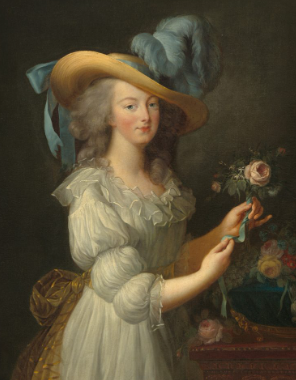
what is the round and open gown called respectively?
Chemise a la reine - round gown
Chemise a la creole - open gown
what important traits do chemise dresses exhibit?
neoclassical love of the lineation of the body through dress
Cinched below the dress (no stays??)
No petticoats?
What was the purpose of the Trianon Estate at Versailles for Marie Antoinette?
The Trianon Estate at Versailles provided Marie Antoinette with a respite from courtly etiquette. It offered more intimate spaces near the main palace and included the Grand Trianon, Petit Trianon, the Queen's Hamlet, and English gardens, serving as a private retreat.
true or false? Antique tunics cinched below the bust and the “natural body” went for Allegory -> real
true
what is cult of nature?
The wealthy class trying to mimic peasant women, stray hats etc, an aspect of anglomania
what garments and hairstyles were seen in phase 5 (mid 1780s-1795) of womenswear?
Gowns with a kerchief puffed at the chest and bustle over the buttocks creating a “S” curve silhouette
False rump (big bump)
Hedgehog hairstyle (like an afro)

menswear vs womenswear 1790s onwards
menswear - The tailored English-style wool frock coat fitted the body closely and had a raised waistline
womenswear - The chemise dress (right) was modified to the prevailing long & tight sleeves and worn over a back bustle.
what happened to marie antoinette from 1789-1793?
Marie-Antoinette was placed under house arrest in 1789 and attempted to flee in 1791. In 1792, she was imprisoned and spent the remainder of her life in Parisian prisons. The princess de Lamballe, who remained loyal to her, was also imprisoned and was killed by a mob in September 1792. Louis XVI was executed in January 1793, and Marie-Antoinette was moved to solitary confinement in the Conciergerie in August 1793. She was tried by the Revolutionary tribunal on October 14, 1793, and executed by guillotine two days later.
she still wears the chemise dress and is a symbol of innocence *
